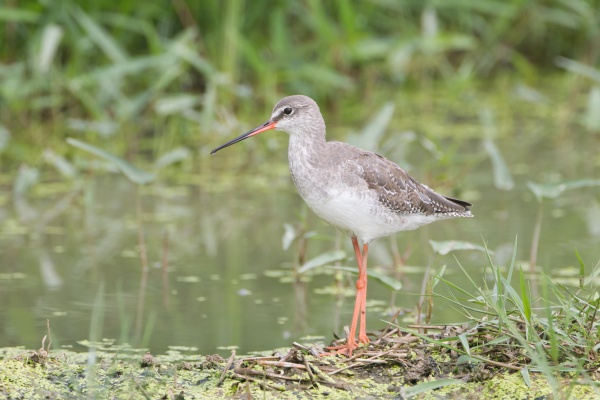Facts About Spotted redshank
The spotted redshank, a wading bird from the Scolopacidae family, was first described by Peter Simon Pallas in 1764. It is a distinctive species with no recognized subspecies, closely related to other Tringa species.
These birds breed in the northern regions of Scandinavia and the Palearctic zone. As winter approaches, they migrate south to warmer areas such as the Mediterranean, the British Isles, France, Africa, and parts of Asia. Occasionally, they are even spotted as far away as Australia and North America.
In terms of appearance, the spotted redshank is a relatively large wader, measuring about 29–31 cm in length, with a wingspan of 61–67 cm, and weighing between 121 and 205 grams. Their plumage changes with the seasons: they are black during the breeding season and very pale in winter. They have distinctive red legs and bills, while juveniles exhibit different coloration. The bird's plumage undergoes molting at various times throughout the year.
The bird's call is a characteristic creaky whistle, and its alarm call is quite distinct. They nest in open, boggy taiga regions, laying four eggs in ground scrapes. Their diet mainly comprises small invertebrates.
Due to conservation concerns, the spotted redshank is protected under the Agreement on the Conservation of African-Eurasian Migratory Waterbirds (AEWA).

 Ireland
Ireland